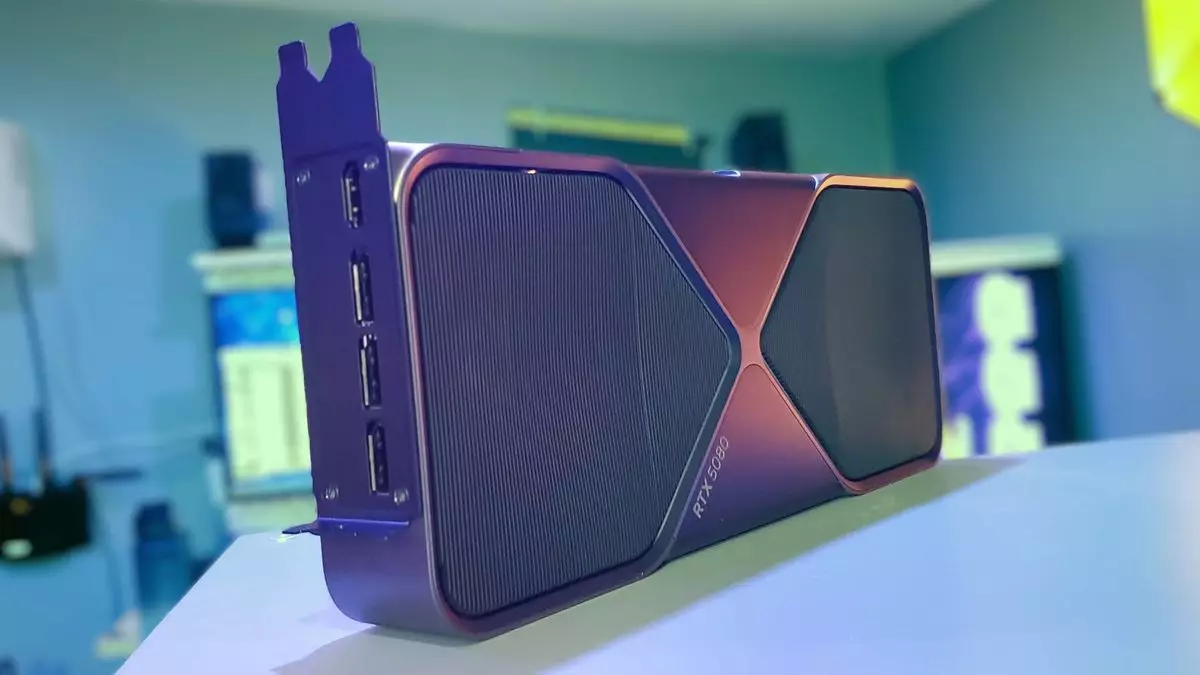The launch of Nvidia’s latest graphics cards, the RTX 50-series, has stirred a whirlwind of industry chatter, with sentiments ranging from overwhelming excitement to tepid indifference. This range of opinions poses intriguing questions about our expectations of technology launches and the realities of consumer demand in the gaming sector.
Upon release, the RTX 50-series garnered a remarkable level of attention. Newegg’s announcement regarding its rapid sell-out of these new graphics cards does little to mask the palpable eagerness from gamers. The fact that the RTX 50-series inventory vanished within minutes speaks volumes about the anticipation that surrounded its launch. According to Newegg’s press release, the earlier stock was claimed in a mere five minutes, although it took a full 20 minutes for all units to be sold out. This disparity is noteworthy, as it implies a high browsing and buying traffic, indicative of the strong demand for Nvidia’s latest offering.
However, while the numbers sound impressive, they raise queries about the scalability of this launch. How do these figures compare to Nvidia’s previous GPU launches? The absence of comparative data leaves a fog of uncertainty around the true scope of this demand. Despite the excitement exhibited by the initial sell-out, we must cautiously consider whether it warrants an unequivocally positive outlook or merely reflects the habitual hype that surrounds new product releases.
Diverse Offerings: The Allure of Custom Builds
Newegg’s stock included not only the individual GPUs but also numerous prebuilt gaming PCs featuring Nvidia’s latest technology, which might have influenced the sell-out rate. The fact that inventory was offered in various configurations from brands like ABS and iBuyPower indicates a strategy designed to cater to a wider range of consumers. Such offerings help to tap into the gaming community’s diversity, appealing to those who prefer simple plug-and-play setups over custom builds.
However, the question remains: how much of the soaring demand stems from a genuine enthusiasm for the RTX 50-series technology itself versus the allure of the ‘new and shiny’? The concept of novelty plays a significant role in the gaming community, often overshadowing actual technological advancements. Gamers frequently find themselves caught in the excitement, purchasing products propelled by marketing hype alone, rather than an informed analysis of their merits.
While the RTX 5080 emerged as the more popular choice, it did so largely due to its pricing; being half that of the flagship RTX 5090 grants it broader appeal. Understanding this dynamic is essential, as price sensitivity often dictates consumer behavior within the PC gaming market. Yet, while the RTX 5080’s demand was impressive, it remained a point of curiosity how it would compare in performance and innovation to its more expensive sibling.
Looking forward, Nvidia and retailers like Newegg face the challenge of ensuring that future restocks meet demand without encouraging the kind of hype that leads to speculation and price gouging. Jim Tseng, Newegg’s VP of product management, articulated a commitment to continue working with Nvidia and its add-in board (AIB) partners to ensure ongoing availability. However, the potential for stock shortages may loom, particularly in a landscape that remains sensitive to previous GPU shortages and inflated prices seen in past years.
The response to the RTX 50-series not only illustrates a keen interest in advanced technology but also highlights a broader phenomenon within the gaming community. Enthusiasm fuels demand, and the patterns seen during launches offer valuable insights into market behaviors. In this age of instant access to information, gaming enthusiasts are more informed than ever, which presents both opportunities and challenges for companies like Nvidia.
As we reflect on this launch, it becomes increasingly clear that grappling with hype as well as actual market viability will define the success of Nvidia’s offerings. Balancing between creating excitement and managing realistic consumer expectations is a delicate task—a testament to the intricate interplay of innovation, demand, and community identity within the ever-evolving gaming landscape.

